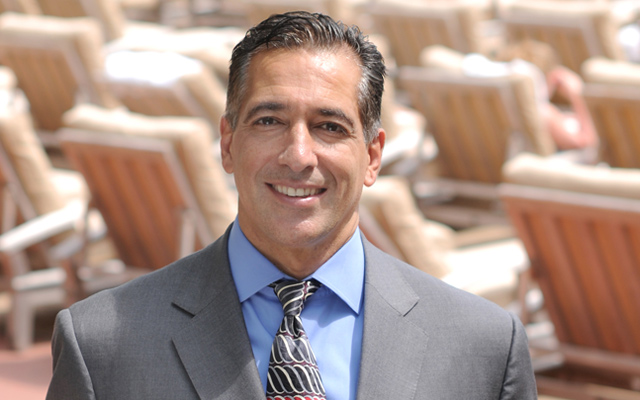In the aftermath of the Sandy Hook school shooting in 2012, a suggestion circulated to send teddy bears to comfort the children in the devastated community. In the end, according to one report, 65,000 teddy bears arrived — overwhelming the town of about 27,000.
People wanted to help, and sending stuffed animals seemed like a good thing. But by many accounts, the surfeit of packages simply compounded the nightmare. Community leaders had to locate and rent storage spaces. Volunteers had to sort and redistribute the bears, all while carrying their own grief and trying to connect their neighbors to the services they truly needed. In short, the intention was good. The actual result? Not so much.
Australians experienced something similar with the wildfires in 2019 and 2020, explains Luke Freeman, executive director of Giving What We Can (part of the England-based Centre for Effective Altruism). Well-intended donations arrived from around the globe, but they overwhelmed volunteers and went to waste because they weren’t serving the community’s actual needs.
Actions like these have a name: disaster giving. Although spur-of-the-moment donations are well-intentioned, they can create more problems than they solve.
“As individuals, we might be inspired by what’s going viral, and that’s good — it shows you are a compassionate person,” says Freeman. “But those moments are a time to pause and reflect on what’s more high impact. Often, the most impactful stuff is preemptive, but it gets ignored because it’s not in front of people’s faces. If you reflect on your giving more intentionally, then you will give in line with your values.”
Identifying What Matters to You
Aligning your giving with your values is a crucial step, notes Rick Cohen, chief operating officer of the National Council of Nonprofits. He suggests considering two separate questions: What problem in the world do you hope to help solve? And what are the things that bring you joy?
Inevitably, Cohen says, one (or more) of the country’s 1.5 million-plus nonprofits is doing exactly the thing that lights you up. “You can find organizations focused on finding homes for specific breeds of dogs and cats, or a group dedicated to spreading the works of the late [composer and songwriter] Stephen Sondheim.”
It’s also vital to recognize that the most relevant party in your giving equation is the one in need, says Joan Harrington, JD, director of social-sector ethics at the Markkula Center for Applied Ethics and author of the organization’s “Ethical Giving Guide.” “The most important thing to ask about your giving is, What am I trying to help with? What am I trying to address? If you stay on those questions, you take the you out of the equation.”
There are a few reasons that motivate people to give, Harrington explains. These include giving from the heart (to something that resonates with you personally, such as your alma mater), maximizing the impact for the least cost (also known as effective altruism), and healing and overcoming injustices.
Identifying which types of giving make the most sense for you may help guide your future choices. “If you can say, ‘Wow, I’m going to pause for a moment and think about one or two paths that are interesting to me,’ you eliminate the chaos when you are thinking of giving,” she says. “Because there are demands everywhere, even on Facebook with friends asking for donations on their birthdays. Try to take the time to figure out who you are.”
This preemptive thinking also makes it easier to say no to appeals that don’t align with your values: You already have your giving planned, so you can decline without feeling guilty.
Giving to the Max
The number of philanthropic people in the United States has declined by about 20 percent over the last two decades, even as the total amount of money donated has increased, notes Kevin Scally, chief relationship officer at Charity Navigator. “Money is going up, but the number of people participating is down. The danger is that corporations and ultrawealthy individuals are giving more and making choices as to what gets funded or doesn’t,” he explains.
“There is such a power in giving, even if it’s a nominal amount. It’s like voting: If you’re not participating and many other people are, your needs are overlooked.”
Besides getting in the game, there are other ways to direct your giving that can help provide stability to an organization you want to see succeed. The first is unrestricted giving: not designating your donation to a specific task within the organization (like a scholarship fund or crisis services), but rather trusting the organization to invest it wisely.
Also, Cohen says, don’t forget about the power of a recurring gift. There are many reasons people give once at the end of the year, including tax planning and feeling the holiday spirit. But if you choose to spread your donations throughout the year instead, you’ll probably feel less strapped for cash.
This model might even allow you to give more overall; you likely won’t notice a slight increase to your monthly gift, but your favorite cause will notice the uptick. “You’re investing your dollars in their work,” Cohen explains. “You’re not going to get a share of stock with a return on that investment in dollars, but the ROI is inside you.”
A donation isn’t always monetary, Cohen adds. The nonprofit and philanthropy world also value the “three Ts”: time, talent, and treasure. Donating your time and talents to an organization can often be what it needs most. All you need to do is ask.
Finally, don’t get hung up on an organization’s overhead. This tends to be a hot topic, but experts agree that the concern is often overblown.
In a 2013 TED Talk called “The Way We Think About Charity Is Dead Wrong,” Dan Pallotta, founder of the Charity Defense Council, makes an impassioned argument to stop equating morality with frugality. It’s a false equivalency that can actually undermine the causes we care about, minimizing their impact on the major social issues of our time.
In fact, overhead is not an enemy of the cause. A nonprofit carrying a higher overhead may provide more nutritious food at its food shelf, offer more competitive pay to retain the brightest people, or deliver more overall community impact — and more sustainable growth — than one with a smaller budget.
“Philanthropy is the market for love,” Pallotta declares. “It is the market for all those people for whom there is no other market coming.”
Giving Resources
Taking the time to search and vet nonprofits and their impact is an important first step. These are some places to start. Just remember: No one statistic, especially overhead, should necessarily rule your decision. Always consider impact.
Candid (formerly GuideStar and Foundation Center)
Get insights and data to research the nonprofits that mean the most to you.
www.candid.org
Charity Navigator
Consider Charity Navigator’s ratings for your nonprofit of choice, browse current cause trends to support, and more.
www.charitynavigator.org
CharityWatch
Get giving tips, plus search charity ratings and data.
www.charitywatch.org
Ethical Giving Guide
Find ideas for how to align your values with your financial donations.
www.scu.edu/ethics/ethical-giving
GiveWell
Search a smaller number of particularly impactful charities.
www.givewell.org
Give.Org
Visit the Better Business Bureau’s nonprofit side.
www.give.org
Giving What We Can
Learn answers to all the critical questions of how, when, why, and where to donate, including philosophical concerns and the brass tacks of donations.
www.givingwhatwecan.org/blog
National Council of Nonprofits
Find facts, figures, and myth-busting information about nonprofits nationwide.
www.councilofnonprofits.org
This article originally appeared as “Mindful Giving” in the September 2022 issue of Experience Life.





This Post Has 0 Comments